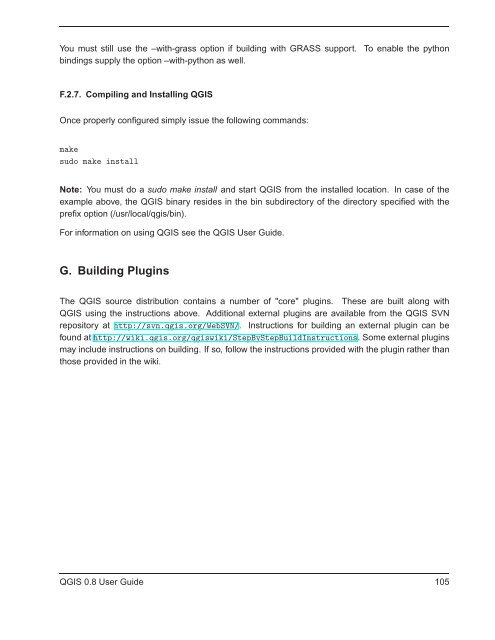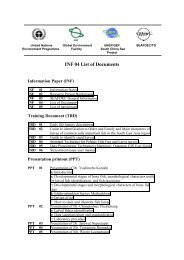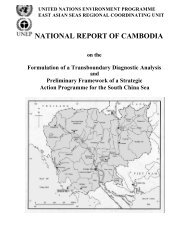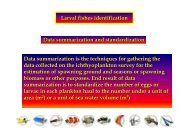TRD 05: Data Presentation techniques (Mapping) Quantum GIS ...
TRD 05: Data Presentation techniques (Mapping) Quantum GIS ...
TRD 05: Data Presentation techniques (Mapping) Quantum GIS ...
You also want an ePaper? Increase the reach of your titles
YUMPU automatically turns print PDFs into web optimized ePapers that Google loves.
You must still use the –with-grass option if building with GRASS support.<br />
bindings supply the option –with-python as well.<br />
To enable the python<br />
F.2.7. Compiling and Installing Q<strong>GIS</strong><br />
Once properly configured simply issue the following commands:<br />
make<br />
sudo make install<br />
Note: You must do a sudo make install and start Q<strong>GIS</strong> from the installed location. In case of the<br />
example above, the Q<strong>GIS</strong> binary resides in the bin subdirectory of the directory specified with the<br />
prefix option (/usr/local/qgis/bin).<br />
For information on using Q<strong>GIS</strong> see the Q<strong>GIS</strong> User Guide.<br />
G. Building Plugins<br />
The Q<strong>GIS</strong> source distribution contains a number of "core" plugins. These are built along with<br />
Q<strong>GIS</strong> using the instructions above. Additional external plugins are available from the Q<strong>GIS</strong> SVN<br />
repository at http://svn.qgis.org/WebSVN/. Instructions for building an external plugin can be<br />
found athttp://wiki.qgis.org/qgiswiki/StepByStepBuildInstructions. Some external plugins<br />
may include instructions on building. If so, follow the instructions provided with the plugin rather than<br />
those provided in the wiki.<br />
Q<strong>GIS</strong> 0.8 User Guide 1<strong>05</strong>
















